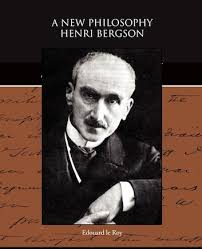Chapter VIII — Conclusion
byChapter VIII draws readers deeper into the evolving vision of Henri Bergson, where reason is no longer limited to logic alone. Instead, two distinct types of order—geometric and vital—are laid side by side, each revealing a different face of reality. Geometric order, with its straight lines and symmetry, offers a world of prediction and control. But this view, while useful in science and mathematics, cannot fully account for life’s complexity. Vital order, by contrast, is fluid, expressive, and continuously unfolding like music rather than machinery. Bergson urges that true understanding emerges not from breaking down life into parts but from feeling its rhythm through intuition.
This contrast isn’t merely academic—it redefines how people connect to existence. Geometric reasoning simplifies the world, but intuition captures its depth and movement. Rather than dismissing reason, Bergson repositions it as only one layer of perception. Intuition dives deeper, tracing the current beneath surface patterns. In this way, Bergson challenges the dominance of analytical reasoning in modern thought. Reality, as he sees it, cannot be mapped entirely—it must be lived. The vibrancy of vital order is experienced in every heartbeat, every moment of growth, every instance of change. This idea reflects his belief that life is fundamentally creative, not mechanical.
The chapter frames Bergson’s philosophy as a return to metaphysics that is not abstract but grounded in lived experience. By focusing on the movement of consciousness and the unpredictability of living systems, Bergson provides an alternative to deterministic worldviews. He draws connections between psychology, metaphysics, and time, suggesting that all three share a foundation in dynamic continuity. The self, he proposes, is not a fixed entity but an evolving thread woven through memory and action. Evolution itself, when viewed through this lens, becomes more than biological—it becomes metaphysical. It is not about survival alone, but about the unfolding of potential. In this sense, creation is not finished. It is happening always, in each life and every moment.
One of the most provocative elements of the chapter is its discussion of a creative and free God. Bergson’s God does not sit outside time, watching from afar. Instead, this divine force pulses within the process of becoming itself. Unlike static theological models, Bergson’s vision embraces uncertainty and possibility. He argues that spiritual thought should evolve just as life does. This interpretation challenges rigid religious doctrines, while still holding space for moral and spiritual depth. God, in Bergson’s metaphysics, is not control but creativity. And this view brings metaphysical inquiry closer to human experience, rather than pushing it into abstraction.
Critics of Bergson have accused his philosophy of opening the door to relativism or diluting ethical responsibility. But this chapter answers that concern by showing how freedom and ethics are central, not incidental, to his system. If life is creation, then moral growth must be part of that process. Each person becomes not by adhering to rigid codes, but by responding creatively and authentically to each moment. This view makes ethics personal, lived, and evolving—far from arbitrary. Spiritual development, too, is not closed off but welcomed in Bergson’s framework. His ideas allow for future revelations and deeper dimensions of understanding, always unfolding as life does.
The closing passages emphasize that Bergson’s philosophy remains open-ended. It resists being boxed into final forms or ultimate systems. Instead, it is a living inquiry, echoing the very life it seeks to understand. His framework encourages readers to think in terms of growth rather than conclusion, possibility rather than prescription. This makes his work not just a system of thought but an invitation to experience life more richly. As the world continues to change, his ideas stay relevant—offering guidance not by dictating truth, but by awakening awareness. Where other philosophies aim to define the world, Bergson’s helps us feel it more deeply.
Overall, the chapter leaves readers with a renewed sense of reality as something active and alive. The universe, through Bergson’s lens, is no longer a machine but a melody—improvised and unfolding. We are not passengers in this journey but participants, shaping the path through our choices and insights. His philosophy becomes a bridge between science, spirit, and self—a space where analytical reason and intuitive wisdom can coexist. For those willing to let go of certainty, what remains is richer: a life not defined by limits, but by ever-expanding potential. In embracing this view, the reader steps into a world where meaning grows not by measure, but by movement.

